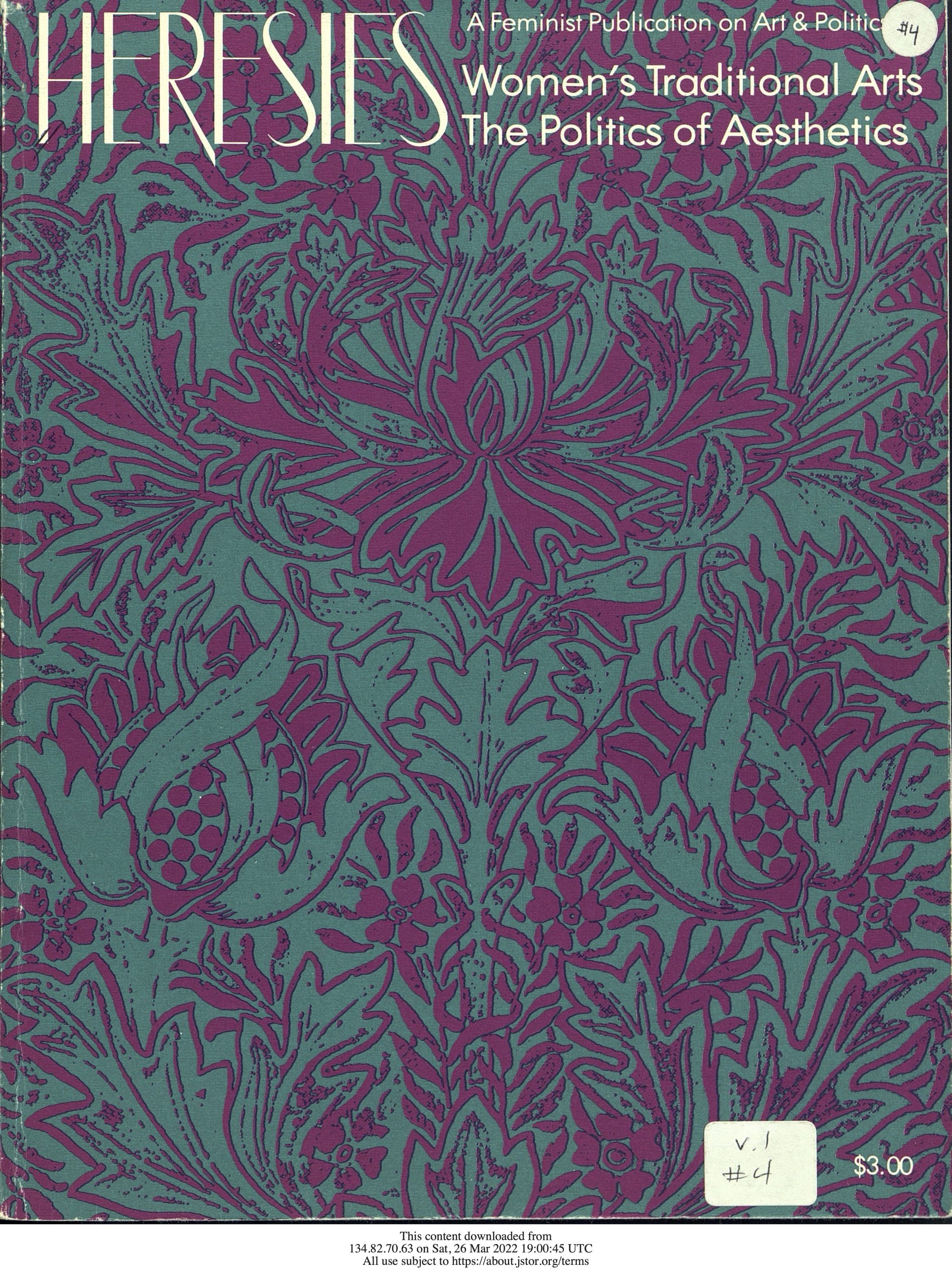Turkmen carpets are fine examples of weaving done by nomadic tribal women. In the last 100 years the context of weaving these carpets has changed considerably; formerly women produced them in the home for local consumption, now contract weavers and female and male factory workers produce for urban and foreign markets. In the nineteenth century the Turkmen lived in the Kara Kum desert in that part of Central Asia which is now the Soviet Socialist Repub- lic of Turkmenistan. This tribe primarily raised sheep and occasionally farmed. They sometimes raided neighboring areas. Nomads, they lived in tents called yurts which could be packed up and taken with them when they moved from one grazing area to another.
Traditionally women made textile items for domestic use. For their yurts they made felt walls and decorative bands. They also knotted or embroidered individual bags for carry ing tent poles, utensils, provisions and other household pos- sessions. A special carpet was hung at the entrance of the yurt and another was hung to function as a door. Carpets woven by women were central to household, cul- tural and religious life: used for entertaining, given as gifts, spread for community gatherings, used to furnish guesthous- es, and used for prayers. Turkmen society regarded a wom- an’s weaving skill much as it esteemed a man s code of valor; weaving defined a woman’s status, indirectly gave her access to wealth, was the one domaiń in which a woman was able to distinguish herself.
In the latter half of the nineteenth century the life of the Turkmen changed because Russia took permanent political and military control and inhibited Turkmen raids of sur- rounding populations. At this time many Turkmen moved to Afghani territory although it was not until the 1920s that large numbers fled to Afghanistan to escape Soviet collectiv- ization.
In Afghanistan the Turkmen competed for pastures and living space with other ethnic groups—Pashtun, Aimaq, Hazara, Tajik, Baluch, Arab and Uzbeg. As the pasturage was limited in Afghanistan and Turkmen flocks reduced, many Turkmen settled into villages; few continued to live as nomads in yurts. If families did not raise enough sheep to provide wool for their weaving needs they had to purchase it—no longer from other Turkmen but from other tribes, such as the tent-dwelling Pashtun. Individual or market trading formerly carried out with kinsmen and other Turk- men was now done with groups who were neither.
The move to Afghanistan severely affected carpet weav- ing. For ten to fifteen years after arriving in Afghanistan Turkmen women did not make carpets.* When they began making carpets again, they had to overcome this break in tradition. They remembered carding, spinning and weaving techniques, but colors and patterns changed. Young girls had grown up without learning the traditional designs. When older women had died, they had taken with them the knowl- edge of traditional patterns and of dye recipes. Changes in color in twentieth-century carpets may also be related to the difficulty of obtaining customary vegetable dyes and mor- dants in a new ecological setting. The breed of sheep and quality of wool also differed in the new environment. De-
Page: 118signs once unique to particular tribal sections, isolated from each other in the past, changed as they came into direct con- tact with each other. Women now married into other groups which led to the mixing of traditional designs.
The society in which Turkmen live has been transformed since the nineteenth century, affecting the women who tradi- tionally weave the carpets as well as their relation to the mode of production of these carpets. Production has shifted its locus from kinship units to a nonkinship context, the fac- tory. The family mode of production could not meet the ris- ing demand for carpets, thus contract weaving and factories increased.
The first factories in the provinces employed only men, but women were weaving out of the home in women’s centers or prisons at that time. In the past few years factories in Kabul have begun to train and employ women who weave in rooms separate from the men. Because of the profit to be gained from weaving, non-Turkmen women have begun to take up carpet weaving—often by apprenticing themselves to Turkmen women in their homes or by going to the factories to learn. Weaving now serves as one of the few nondomestic occupations open to women in Afghanistan. At a time when the family-centered tribal society is breaking down, carpet weaving allows women an opportunity to participate in a more complex, non-kin-based economy.
Since the days when Turkmen women lived on the Rus- sian steppes and wove for their families, conditions have changed. The women who remained in the Soviet Union were employed in state-controlled factories before the women who moved to Afghanistan.
Afghani Turkmen women still weave under traditional conditions or on contract; primarily it is non-Turkmen women in Afghanistan who have begun factory work. Where Turkmen women oversee the process in factories, the high quality of weave has been maintained.
Turkmen women have always had an important influence on weaving, originally produced for exclusively domestic use but now produced for market consumption as well. Although the traditional colors and designs have changed because of political boundaries, migration and altered modes of produc- tion, Turkmen women continue to produce fine examples of weaving.
Note: Material for this article comes from travel through Turkmen regions in Afghanistan in 1971 and observations in a Kabul carpet factory in December 1975 and February 1977. Special thanks are due to Hajji Ewaz Badghisi, his wife, Bayram, and daughter, Aidgol, for their patience in ex- plaining the techniques of weaving and dyeing. 1 also wish to acknowledge the assistance of Dr. Brian Spooner and Pat Barr for their part in helping me learn about the Turkmen and their weaving in the twentieth century. *Brian Spooner, “Afghan Carpets,” Expedition 15 (2), 1973, p. 15.
Mary A. Martin is a cultural anthropologist who has worked in Iran and Afghanistan. She lives in Philadelphia.

